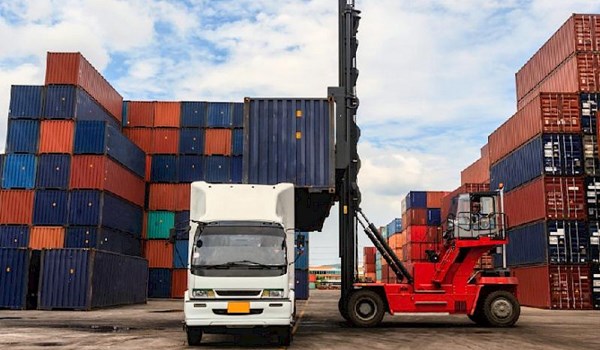
Iran’s Exports to Persian Gulf Nations Rise by 38% in 8 months


Iran’s exports of non-oil commodities to the Persian Gulf littoral states exceeded $6.5 billion during the past eight months of the current fiscal year (March 21- Nov. 21).
Data released by the Islamic Republic of Iran Costumes Administration show Iran’s exports to Oman, the UAE, Qatar, Bahrain and Kuwait surpassed $6.5 billion during the period, indicating a 38% in value compared with the similar time span of last year.
Last year’s eight-month exports to the same destinations stood at $4.701 billion.
The UAE was Iran’s top export destination among Persian Gulf nations. The country imported 11.06 million tons of goods from Iran worth $5.09 billion.
Other top destinations were respectively, Oman with 1.568 million tons of goods worth $584 million, Kuwait with 2.36 million tons worth $184.64 million, Qatar with 922,977 tons of commodities worth $180.6 million, and Bahrain with 4,497 tons of goods worth $8.33 million.
Iran’s non-oil trade with Persian Gulf littoral states totaled $23.89 billion in the last Iranian year (ended on March 21).
The country mainly exports gas condensate, liquefied natural gas, low density oil, hydrocarbon gases, hydrocarbons, copper cathode, tomatoes, iron and non-alloy steel ingot, household cleaning detergents, bitumen, ice cream, iron/steel pipes, semi-finished iron/non-alloy steel products, floorings, and watermelons to these states.
Early in this month, Deputy Head of the Trade Promotion Organization of Iran Mohammad Reza Modoudi announced that Iran's non-oil exports have considerably increased during the first eight months of the current Iranian year (March 21, 2018-November 22, 2018).
“Non-oil exports have been reached more than $27.3 billion and gone beyond $30 billion by November 6, which shows about 14% growth comparing to the same period last year,” Modoudi added.
He also said that Iran's exports in technical and engineering services hit $500 million.
The Central Bank of Iran (CBI) announced on November 26 that Tehran's total foreign debts reduced by 9 percent in the first six months of the current Iranian year (March 21 – September 21), showing a significant slump as compared to the same period last year.
The volume of Iran’s foreign debt by the end of Iranian month of Shahrivar (Sept. 21) hit $10,317 million, $6,853 and $3,464 million of which is related to the mid-, long-and short-term periods, respectively.
CBI also put the total volume of Iran’s foreign debt by the end of Iranian month of Mordad (August 21) at $10,405 million, the rate of which faced a significant decline in the next month.
Statistics show that Iran’s total foreign debts by the end of the first Iranian month of Farvardin (April 21) hit $11,305 million, showing a significant decline in the first six months of the current year.
Accordingly, the proportion of Iran’s foreign debts to gross domestic product (GDP) stands at about 2.5 percent which is considered as a partial figure.
Comparing the index of ratio of Iran’s foreign debt to GDP with other countries indicates that Islamic Republic of Iran is among the countries that has the minimum foreign debt rate in the world.
Foreign debt includes debts of a country to foreign lenders which can contain the loans received from foreign private banks, other governments and international financial institutions such as World Bank (WB) and International Monetary Fund (IMF).


Trump weighs using $2 billion in CHIPS Act funding for critical minerals

Codelco cuts 2025 copper forecast after El Teniente mine collapse

Electra converts debt, launches $30M raise to jumpstart stalled cobalt refinery

Barrick’s Reko Diq in line for $410M ADB backing

Abcourt readies Sleeping Giant mill to pour first gold since 2014

Nevada army depot to serve as base for first US strategic minerals stockpile

SQM boosts lithium supply plans as prices flick higher

Viridis unveils 200Mt initial reserve for Brazil rare earth project

Tailings could meet much of US critical mineral demand – study

Kyrgyzstan kicks off underground gold mining at Kumtor

Kyrgyzstan kicks off underground gold mining at Kumtor

KoBold Metals granted lithium exploration rights in Congo

Freeport Indonesia to wrap up Gresik plant repairs by early September

Energy Fuels soars on Vulcan Elements partnership

Northern Dynasty sticks to proposal in battle to lift Pebble mine veto

Giustra-backed mining firm teams up with informal miners in Colombia

Critical Metals signs agreement to supply rare earth to US government-funded facility

China extends rare earth controls to imported material

Galan Lithium proceeds with $13M financing for Argentina project

Kyrgyzstan kicks off underground gold mining at Kumtor

Freeport Indonesia to wrap up Gresik plant repairs by early September

Energy Fuels soars on Vulcan Elements partnership

Northern Dynasty sticks to proposal in battle to lift Pebble mine veto

Giustra-backed mining firm teams up with informal miners in Colombia

Critical Metals signs agreement to supply rare earth to US government-funded facility

China extends rare earth controls to imported material

Galan Lithium proceeds with $13M financing for Argentina project

Silver price touches $39 as market weighs rate cut outlook

















